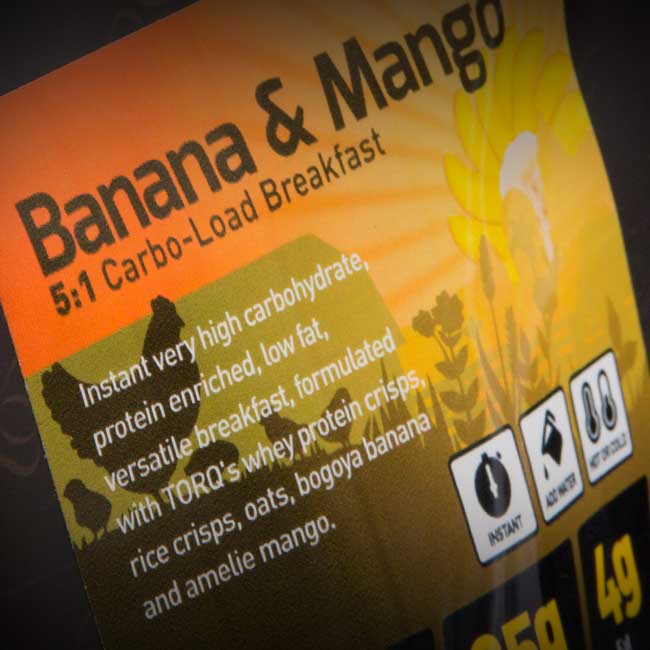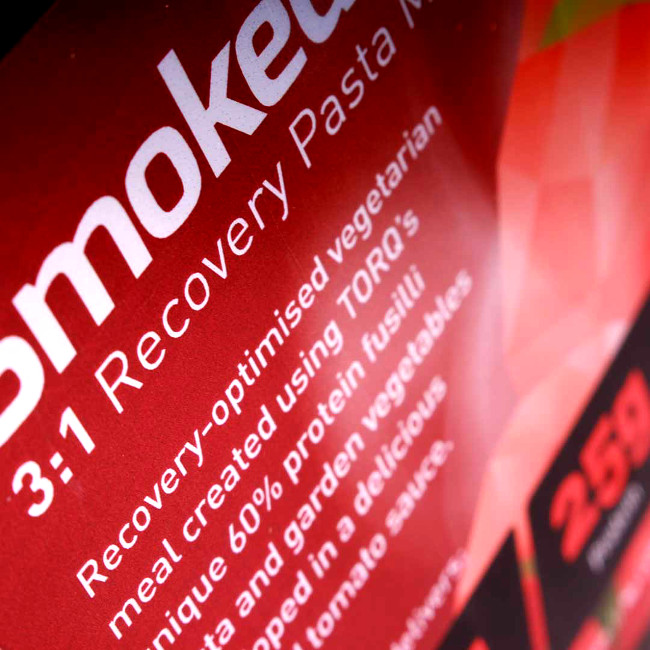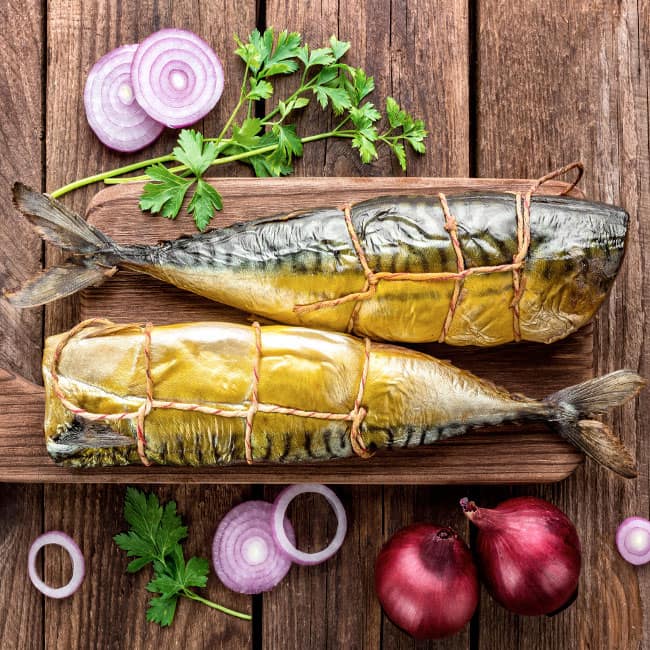Fuelling your training and life in general outside of ‘race day’ involves following some very simple fundamental steps with your general nutrition. Nutrients are typically categorised into two camps, the ‘Micronutrients’ and the ‘Macronutrients’.
Micronutrients include the smaller items like vitamins and minerals. These nutrients really are the glue that holds everything together and must never be ignored, so however hard you’re training, you must always make an effort to consume fresh fruit and vegetables regularly throughout the day. These foods can easily be ignored, because they don’t hold the calorie density craved for when training hard, yet they contain compounds that will stop you getting sick and that help to build the cellular chemistry behind your great performances. If you ignore them, your body will ultimately buckle under the strain, which will clearly cause a major setback in your overall training goals. Fresh fruit and vegetables also contain high levels of dietary fibre, which although essentially calorie-free, is vital for intestinal health – pretty important if you’re wanting to absorb nutrients through it on a regular basis and under exercise stress. From a health perspective, fibre is vitally important and this article from the BBC News website explains how increasing our fibre is the single biggest favourable health adjustment we can make.
Macronutrients include Protein, Carbohydrate and Fat. These nutrients are the large energy-rich nutrients responsible for the vast majority of the body’s functions, the Micronutrients being much more subtle in their behaviour. Protein is the main building block of the human body and is the primary component of muscle tissue and other vital organs. Protein is also an essential component of many enzymes and hormones. Modern research suggests that any more than a 25 gram ingestion of protein at a time is wasted and that athletes should consume a 20-25 gram dose every 4 hours or so (5 to 6 times per day). This ensures that sufficient protein is circulating in the blood at all times to do the work the body may be asking of it. There are a whole variety of products on the market nowadays which advertise that they contain this magic 20-25 grams of protein, so this shouldn’t be too difficult to organise supplies. Alternatively, look at regular foods and make sure that you consume meals/snacks regularly containing sufficient protein.

At TORQ we produce a variety of breakfasts and meals which contain precisely 25g of high quality protein and depending on the amount of activity you are doing on a particular day, you can choose a ratio of Carbohydrate:Protein to suit your energy output. TORQ Meals and Breakfasts range from 2:1 to 5:1 Carbohydrate:Protein, but the protein component is always 25g. We’re not for a moment suggesting that you should consume our TORQ Meals and Breakfasts all the time, but they can help when you’re busy or know that the quality of food you might get on the road is likely to be poor. They are very useful tools to help you get the job done. For further information on these products, click HERE.

Whilst protein essentially forms the structure of the engine, carbohydrate is the primary fuel source to drive it. Fat is also an important fuel source, which we will discuss shortly, but carbohydrate is the muscle’s preferred fuel (it’s more instantly available) and unlike fat, it’s held in limited supply in the human body, so it can easily run out. The human body can store around 500g (2,000 calories) of carbohydrate in the muscles and liver. This is called ‘Endogenous Carbohydrate’ and if these stores are full, your exercise session will feel great. If they are low or run out, your exercise performance will drop off a cliff. In cycling , this cliff-drop is commonly referred to as ‘Bonking’. It’s a very unpleasant debilitating feeling and if you succumb to it, any dreams of a great performance will be for the birds.
The secret to completing successful endurance training involves improving your body’s ability to burn fat, because this isn’t held in limited supply like carbohydrate. You should also begin your sessions with full stores of carbohydrate and fuel with what’s called ‘Exogenous Carbohydrate’ whilst you exercise. Exogenous carbohydrate refers to external fuel sources like energy drinks, gels, bars and chews.
The way you train and periodise your nutrition will ultimately determine how much fat you are able to burn and this has been covered comprehensively in our Fasted Training or ‘Training Low’ article. In addition to this, if you want to keep your endogenous carbohydrate stores fully loaded, you will need to make sure that you consume plenty of carbohydrate-rich foods like pasta, rice, potatoes, bread, cereals and pulses in your general diet. Don’t shy away from sugars either, especially when you’re training hard, because you will need the energy from them. If you want to go natural, use honey, agave syrup or molasses. It’s worth noting that if you add honey to a piece of toast, you literally double the carbohydrate content of it and toast with honey on it is much easier to eat than without. Not great if your aim is weight loss, but ideal if you’re training hard, burning copious calories and need to re-stock your glycogen stores.
Once you’ve optimised your nutritional intake outside of your exercise and filled your endogenous stores, you need to look at your exogenous fuelling – the carbohydrate intake you implement during exercise. When you consume carbohydrate outside of exercise, you store it as glycogen – remember, you can only store up to 500grams and then any excess carbohydrate gets stored as fat. When you consume exogenous carbohydrate during exercise in the form of energy drinks, gels, bars and chews, you burn this carbohydrate directly and it isn’t stored. The principle of fuelling during exercise is therefore quite obvious if you think about it – you’re providing an alternative source of carbohydrate to burn other than your endogenous stores – your endogenous glycogen stores therefore run out later. The next logical assumption is that the more exogenous carbohydrate you consume during exercise, the more of a ‘sparing’ effect this has on your stores and this process is termed ‘glycogen sparing’.

There are some significant benefits to be gained from fuelling during training, because empty glycogen stores take a long time to top back up. Even on a high-carbohydrate diet, research suggests it’s about 48 hours for full replenishment, so if you can spare your glycogen by fuelling properly during exercise it stands to reason that you’ll recover your endogenous stores more quickly afterwards. If your stores recover quicker, you can train hard again sooner and your fitness will progress faster.
Unfortunately it’s not as simple as consuming bucket loads of carbohydrate during exercise to prevent endogenous glycogen depletion, because there are absorption limits dictated by carbohydrate transporters in the intestinal wall. If you are consuming glucose based energy products, the limit to absorption is around 60 grams per hour. If you think fuelling on jelly babies is a good idea, these are made with normal sugar and absorption is once again limited to around 60 grams per hour. Normal sugar is 50% glucose and 50% fructose. The science is that glucose is transported by a carrier called SGLUT1 and fructose is transported by a carrier called GLUT5. SGLUT1 maxes out at 60 grams per hour and GLUT5 maxes out at 30 grams per hour. Whichever way you look at it, glucose-only formulations are limited to 60 grams per hour by SGLUT1 and sucrose formulations are limited to 60 grams per hour by GLUT5.
The only way to get higher absorption rates than 60 grams per hour is to combine glucose and fructose in a 2:1 ratio so that both carriers are saturated, resulting in 90 grams carbohydrate delivery per hour. This research has been supported by over 20 peer-reviewed published studies since 2005 and time and time again it has been proven. It’s pretty logical when it’s explained properly isn’t it – give the glucose transporter what it needs and give the fructose transporter what it needs. Suffice to say, all of TORQ’s Fuelling System Products are based on this 2:1 dual-delivery of glucose derivatives and fructose. Hopefully you can understand why this kind of research is fundamental to your success, not just in your training, but in the event itself, which will be discussed shortly.
If you want to learn more about fuelling, or have the concepts explained clearly with the help of infographics, please take the time to watch this video. If you’re a cyclist, watch the first video and if you’re a runner, watch the 2nd video instead:


The last Macronutrient to discuss is fat. Fat contains essential material to support cell membrane structures, hormones and to provide a vital fuel source for endurance activity. It also contains fat-soluble vitamins A, D, E and K. That said, any over-consumption of carbohydrate or protein calories are stored as fat, so there’s a strong argument to keeping fat intake relatively low and maximising the intake of other calories, which if not useful for other processes, can be stored as fat anyway. Omega 3 is a fat and essential oil which is disturbingly overlooked in western societies. As a population our ratio of Omega 6, which is more abundantly available, to Omega 3 is really distorted and the upshot of it is that we should be looking to consume more sources of Omega 3 whilst reducing our intake of other more common fats. Good sources of Omega 3 include oily fish including salmon, walnuts, chia seeds and flax seeds to name a few. Do some research and start the hunt. You should only need to hunt for Omega 3 sources, there’s certainly no need to hunt for fat in general.

So, if we burn fat as a fuel during exercise, why don’t we consume it during exercise? The answer’s simple – it’s just as easy to mobilise fat to burn from our bodily stores as it is to burn dietary fat directly, so what’s the point? When we know that carbohydrate is held in limited supply, why would we need to even think about supplementing with fat? Also, fat dramatically slows down the absorption of carbohydrate, so if you were to consume it during exercise, not only are you putting in an irrelevant fuel, you’re slowing your essential carbohydrate absorption to a crawl. There may be some clues here as to what you shouldn’t be consuming during your race perhaps? All will be discussed.
Regarding hydration, dehydration will not help your performance and chronic dehydration could be very dangerous, so you need to take it seriously. Make sure you replace the fluid and electrolytes you lose through perspiration. It’s a simple rule and one that requires variable action, depending on how high your perspiration rates are. If it’s a very warm day or you’re training indoors and perspiration rates are high, you will need to drink significantly more than if training in cooler conditions.
Consuming fluid through a good energy drink makes the most sense, since a proper energy drink (like TORQ Energy) will contain water, all 5 electrolytes and carbohydrate. The carbohydrate will actually facilitate the hydration process and will also provide a valuable exogenous fuel source as discussed above. TORQ have devised the TORQ Fuelling System to simplify the fuelling and hydration procedure and it’s very straight forward and logical. It’s vital to understand that a functional hydration drink will also contain fuel. Take the time to watch this short video to understand how the TORQ Fuelling System works. If you’re a cyclist, watch the first video and if you’re a runner, watch the second video instead:







